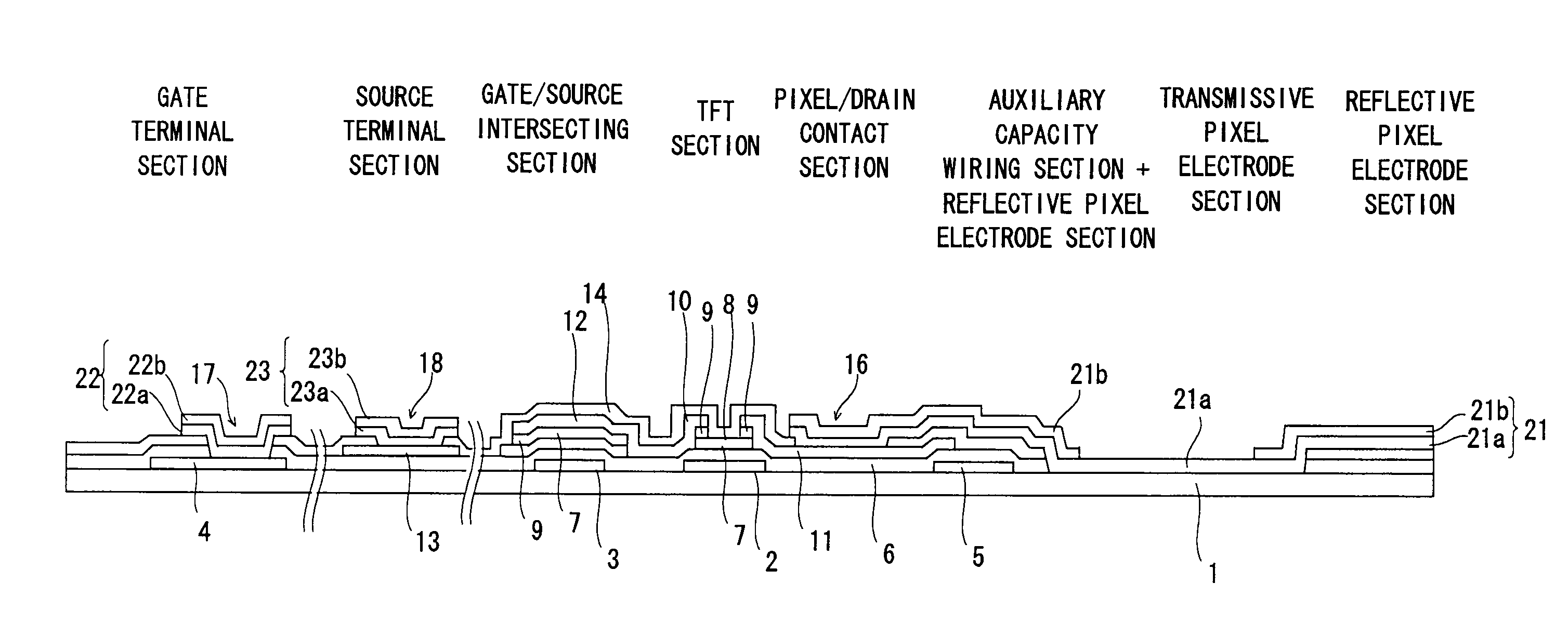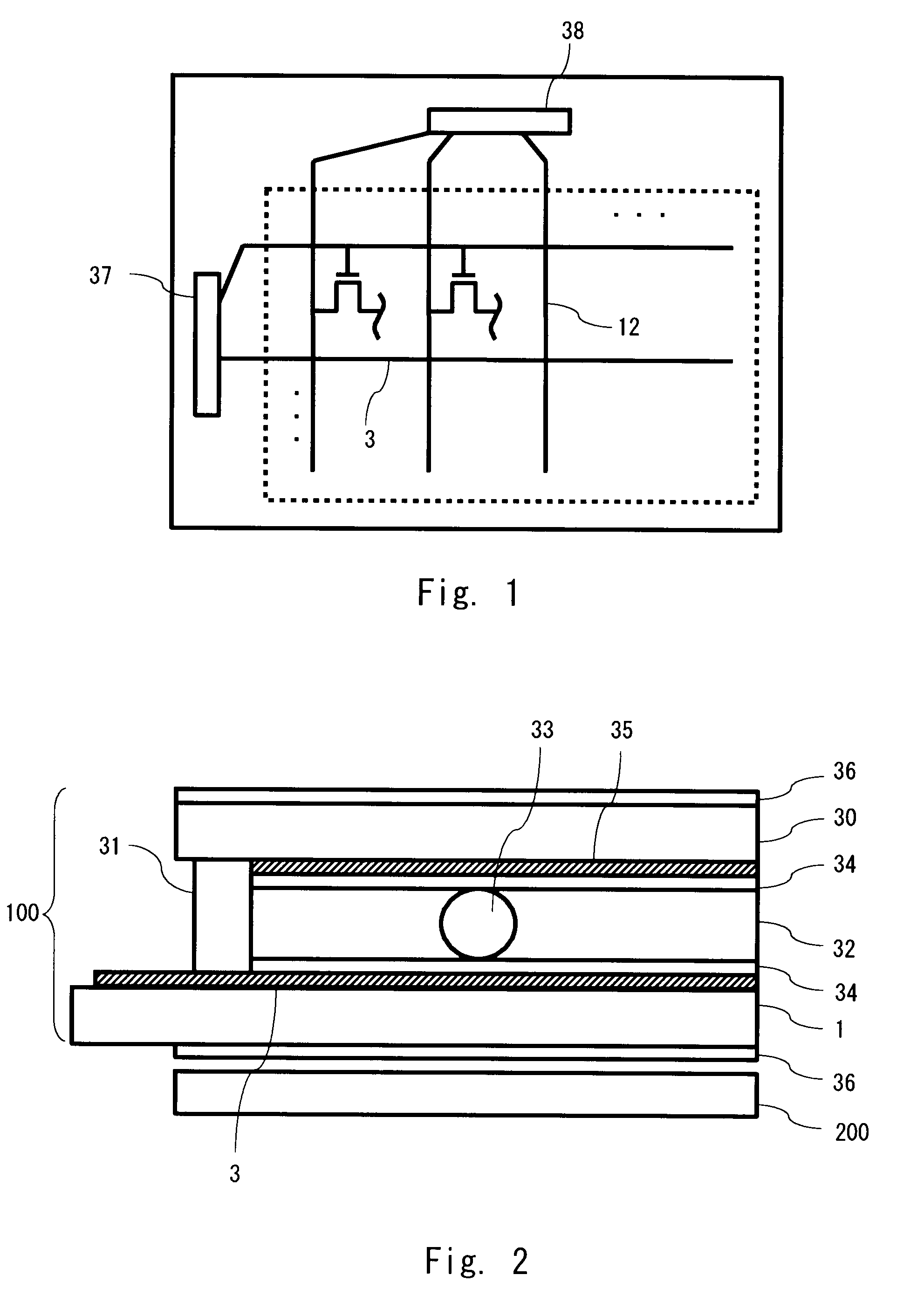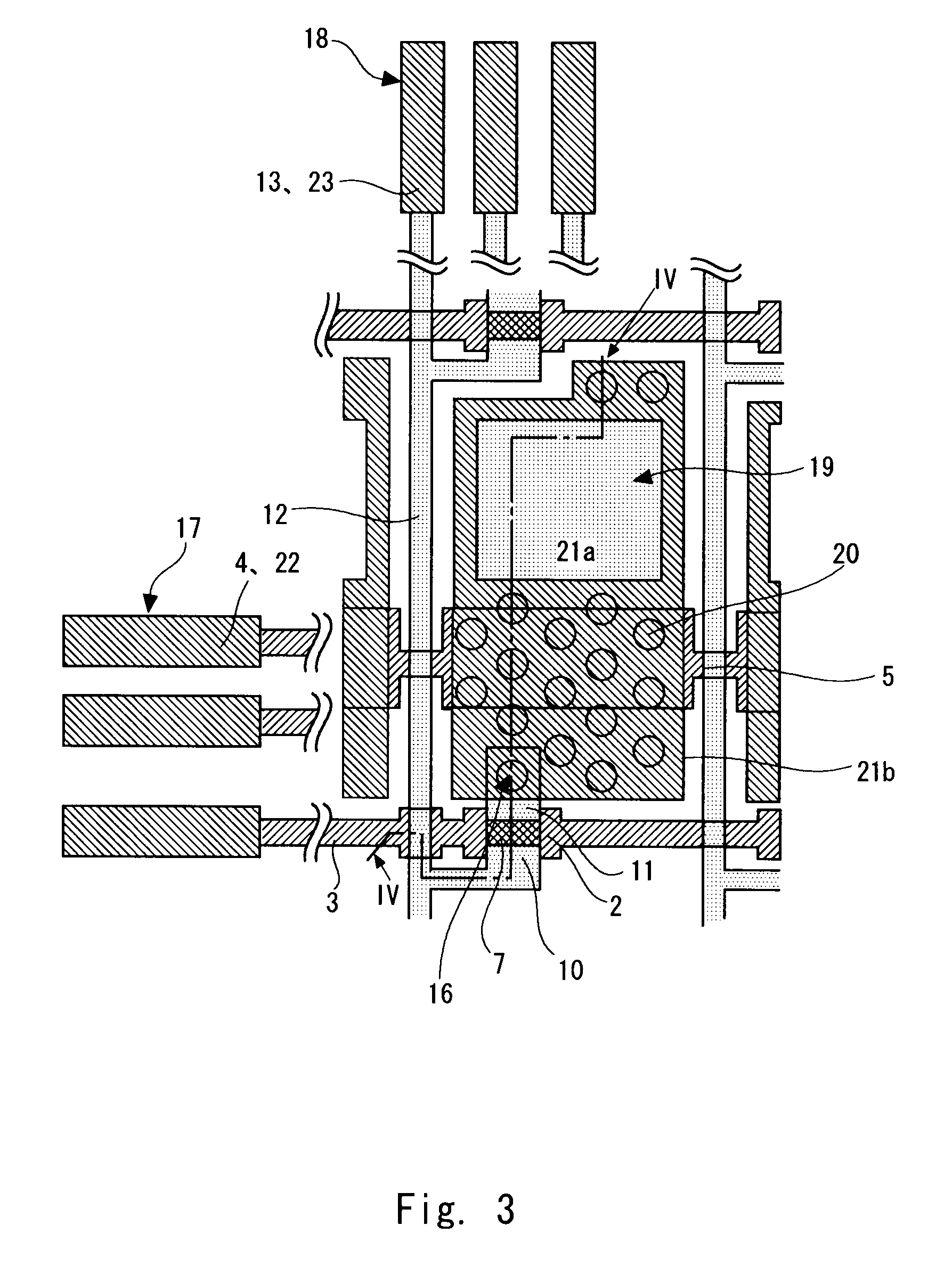Laminated conductive film, electro-optical display device and production method of same
a technology of electro-optical display and conductive film, which is applied in the direction of superimposed coating process, insulation conductor/cable, instruments, etc., can solve the problems of increasing the number of production steps, reducing production efficiency, and difficulty in recognizing the display, and achieves superior electro-optical properties
- Summary
- Abstract
- Description
- Claims
- Application Information
AI Technical Summary
Benefits of technology
Problems solved by technology
Method used
Image
Examples
first embodiment
[0036]The following provides an explanation of the configuration of a semi-transmissive liquid crystal display device, and production method thereof, as an electro-optical display device according to a first embodiment of the present invention with reference to the drawings. First, with reference to FIGS. 1 and 2, an explanation is provided of the configuration of a semi-transmissive liquid crystal display device according to the present embodiment. FIG. 1 is an overhead view showing the configuration of a semi-transmissive liquid crystal display device according to the present embodiment. In addition, FIG. 2 is a cross-sectional view showing the configuration of a semi-transmissive liquid crystal display device according to the present embodiment.
[0037]As shown in FIGS. 1 and 2, a semi-transmissive liquid crystal display according to the present embodiment is provided with a liquid crystal display panel 100 and a backlight 200. The liquid crystal display panel 100 displays images b...
second embodiment
[0078]An electro-optical display device according to a second embodiment of the present invention has a TFT active matrix substrate of the same configuration as that used in the semi-transmissive liquid crystal display device of the first embodiment shown in FIGS. 3 and 4. In addition, although the basic process flows of the production method thereof is also the same as that of the first embodiment as shown in FIGS. 5A to 5H, the method of forming the pixel electrode 21 shown in FIG. 5E differs from that of the first embodiment. The following provides a detailed explanation of that difference in the production method.
[0079]In the pixel electrode formation step shown in FIG. 5E, the transparent conductive film 21a is first deposited on the second interlayer insulating film 15. Subsequently, plasma comprised mainly of air is irradiated onto the surface of this transparent conductive film 21a. A third metal conductive film is then deposited on the transparent conductive film 21a irradi...
third embodiment
[0083]The following provides an explanation of the configuration of a TFT active matrix substrate used in an electro-optical display device according to a third embodiment of the present invention with reference to FIG. 6. FIG. 6 is a cross-sectional view showing the configuration of the TFT active matrix substrate according to the present embodiment. In the present embodiment, the second interlayer insulating film 15 of the first and second embodiments is omitted, and surface irregularities for scattering reflected light are not formed on the reflective pixel electrode. In addition, the production method thereof is able to use the production flow of the first and second embodiments with the exception of omitting the formation of the second interlayer insulating film 15. Thus, the production process can be simplified thereby making it possible to further improve production efficiency.
[0084]The optical path lengths of the reflective pixel electrode section and the transmissive pixel ...
PUM
| Property | Measurement | Unit |
|---|---|---|
| transmittance | aaaaa | aaaaa |
| transmittance | aaaaa | aaaaa |
| thickness | aaaaa | aaaaa |
Abstract
Description
Claims
Application Information
 Login to View More
Login to View More - R&D
- Intellectual Property
- Life Sciences
- Materials
- Tech Scout
- Unparalleled Data Quality
- Higher Quality Content
- 60% Fewer Hallucinations
Browse by: Latest US Patents, China's latest patents, Technical Efficacy Thesaurus, Application Domain, Technology Topic, Popular Technical Reports.
© 2025 PatSnap. All rights reserved.Legal|Privacy policy|Modern Slavery Act Transparency Statement|Sitemap|About US| Contact US: help@patsnap.com



